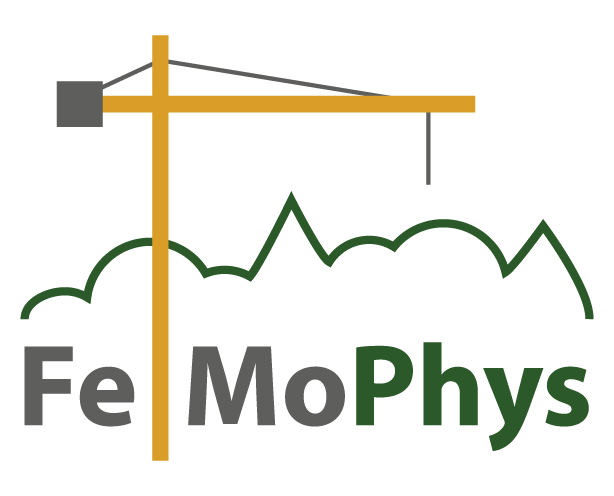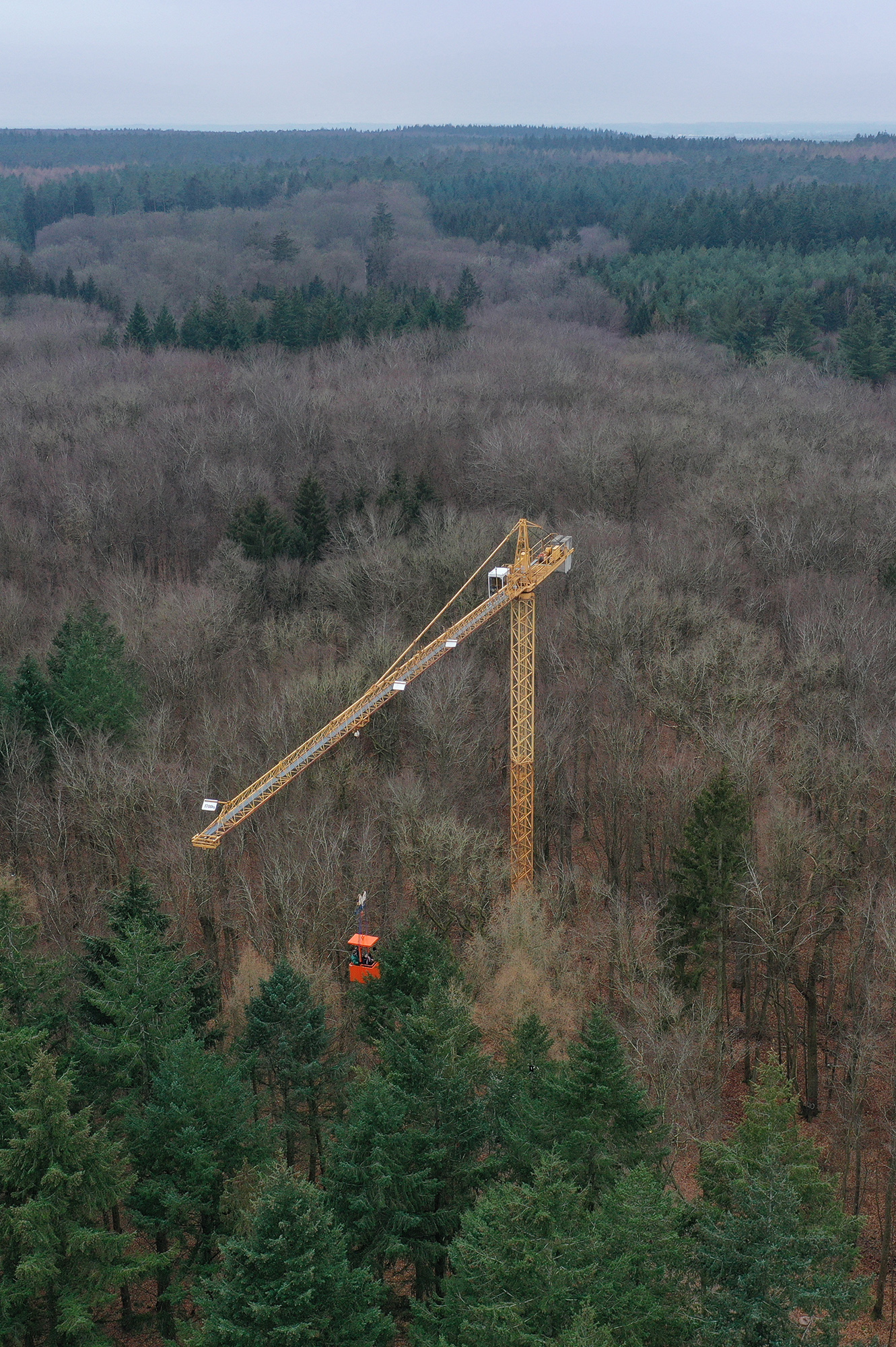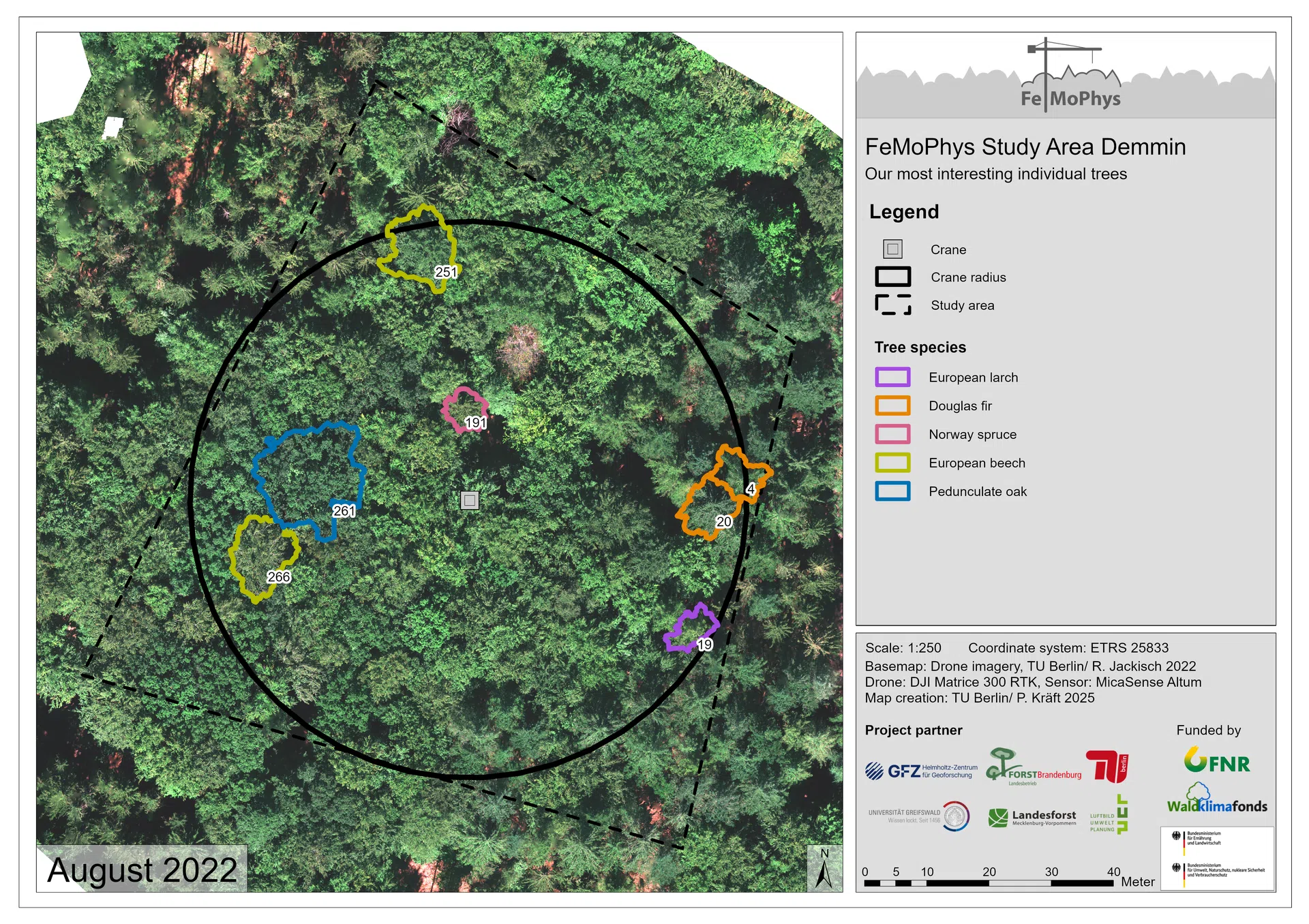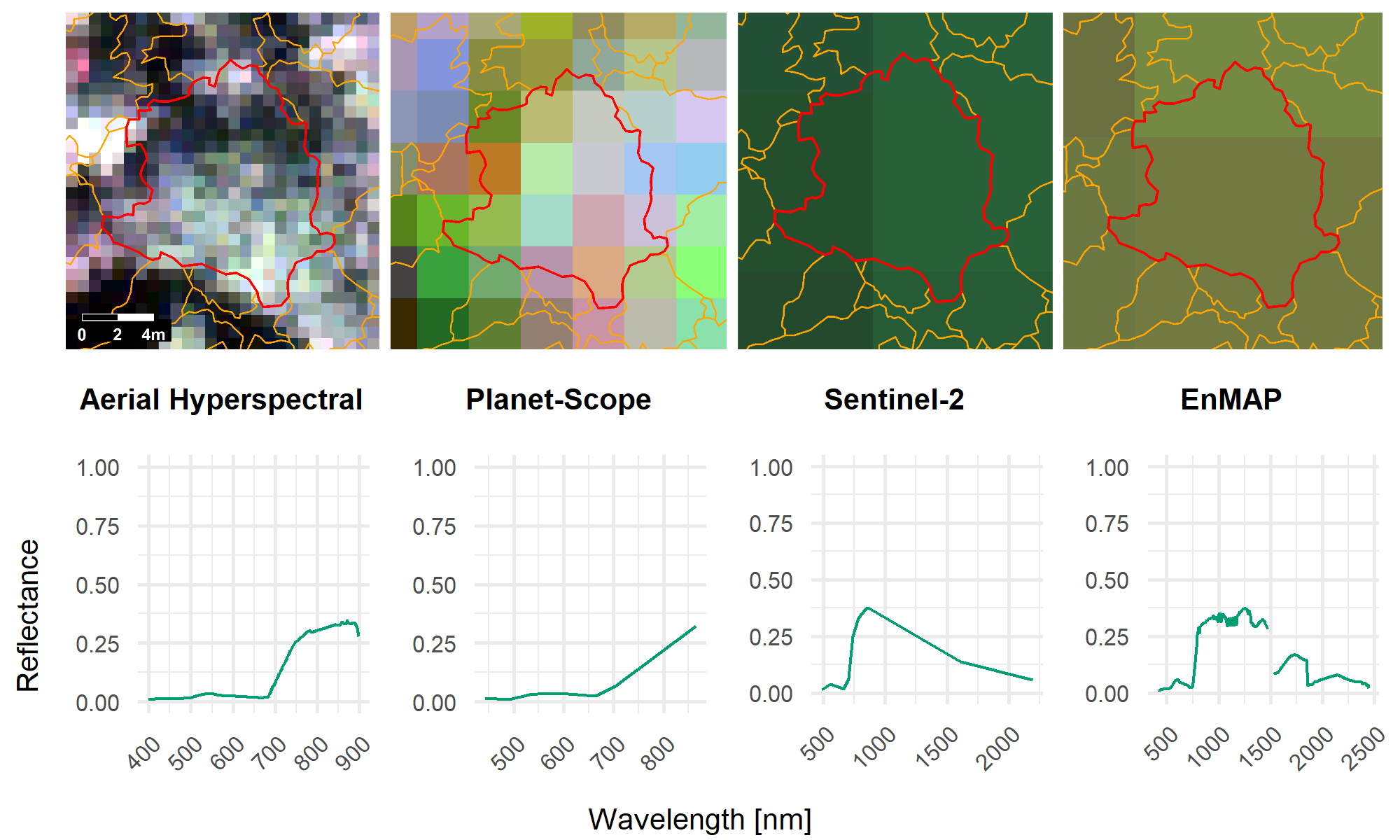
Due to climate change, the need for information about forest health is increasing. Because accurate data is often lacking, many estimates are contradictory and speculative. Forestry remote sensing can fill this gap. With better image quality, new sensors and cameras (e.g., hyperspectral), as well as affordable personal flying devices (e.g., drones), there are more opportunities to assess tree health. In addition, tree physiology can now rapidly analyze many plant substances through semi-automated lab methods, which are good indicators of vitality and stress in many tree species.

The study area covers 100 m x 100 m and is located in a densely stocked mixed beech stand in the Wendeforst near Drönnewitz/Demmin in Mecklenburg-Vorpommern, approximately 45 km southwest of Greifswald. In the center of the area, a Liebherr 71EC tower crane with a lifting height of 40 m was installed in November 2022 as part of the FeMoPhys research project. Its 45 m jib allows access to the tree crowns for sampling and measurements.
Geographically, the area lies in the North German Plain and is characterized by predominantly flat terrain with some glacially shaped hills. Elevations in the study area range from 4 to 10 m above sea level, and the crane is located at approximately 7 m above sea level. A small ditch runs through the area from northeast to southwest, where the soil is water-saturated depending on weather and precipitation. The area lies in a temperate climate zone with an average annual temperature of 9.5 °C and an average annual precipitation of 735 mm.
In total, the tree population includes 308 individual trees (as of December 2022). The pedunculate oaks are 172 years old, other trees are about 90 years old, and the understory is younger. The exact tree species composition in the area is as follows (as of December 2022):
The project was covered in a report by NDR:



Spatial and spectral resolution of the beech tree (ID: 251) across different sensors used in the FeMoPhys project. Spectral resolution is depicted using the mean reflectance of the tree crown, with weighted means applied for the Planet-Scope, Sentinel-2, and EnMAP sensors. Graphic design: Elina Mevenkamp (LUP GmbH) with the cooperation of the project consortium.